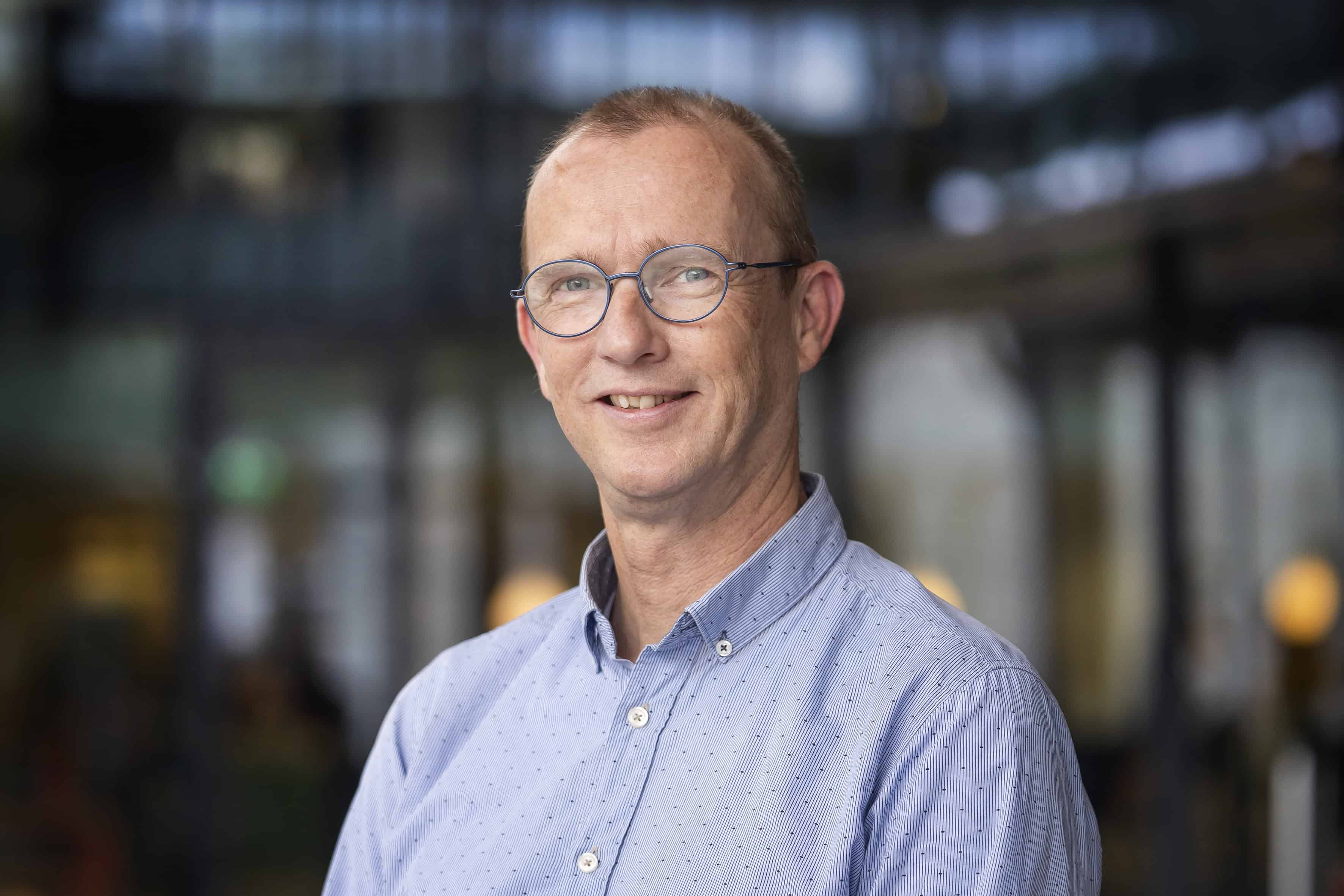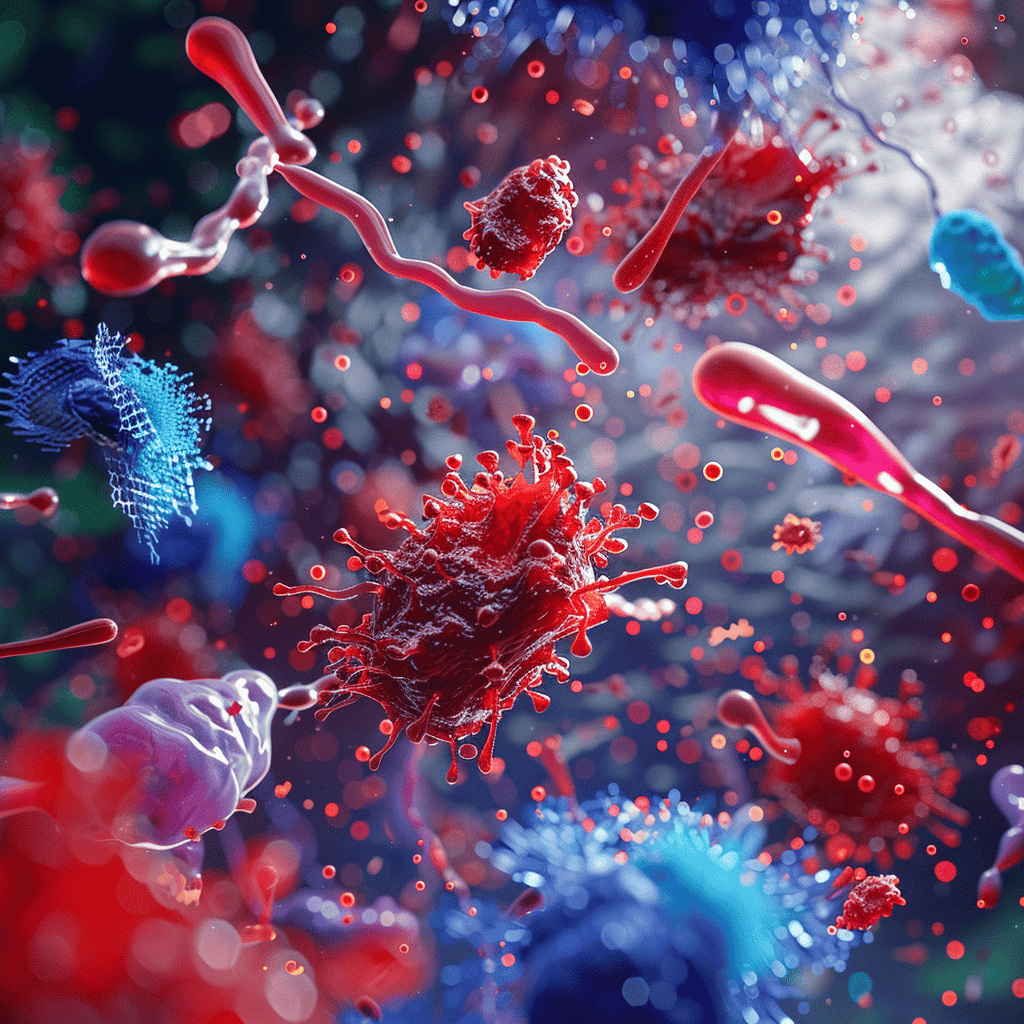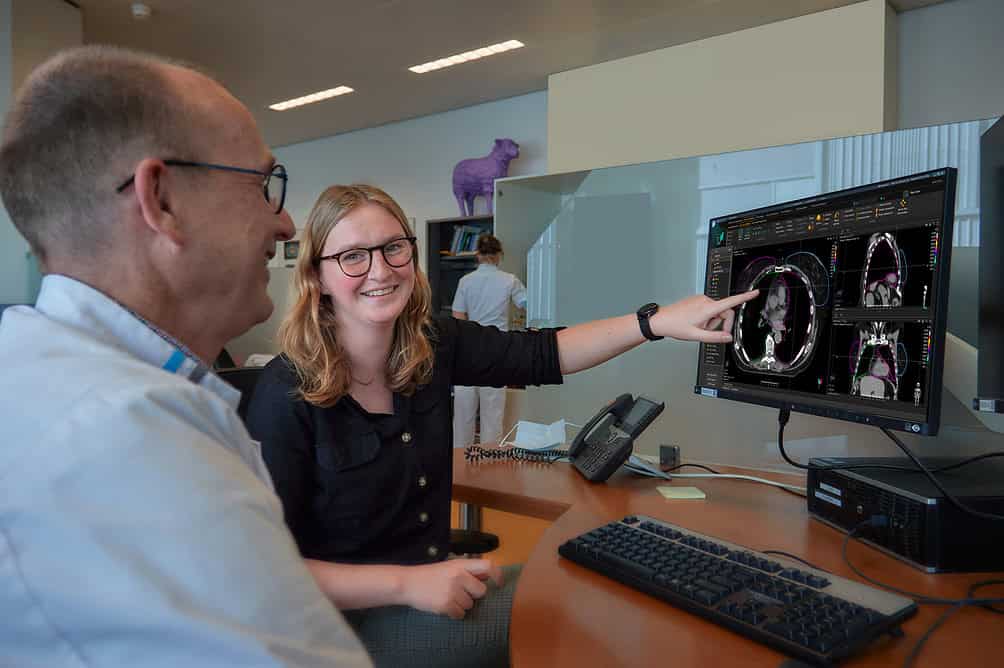
The technology that makes radiation therapy for cancer possible has improved considerably in recent decades, clinical physicist Coen Hurkmans observes. He has been working at the Catharina Hospital in Eindhoven for 23 years. “We can irradiate more and more precisely. That has many advantages, fewer treatments are needed and it is less invasive for patients,” he states. On June 7, 2024, Hurkmans will hold his inaugural address during the MedTech Day at Eindhoven University of Technology. Last year – in addition to his work at the hospital – he was already appointed professor of radiotherapy. Hurkmans’ department supervises several graduating master’s students and doctoral students. “The cross-pollination between the hospital and the university ensures that innovations get into practice faster. That is incredibly important in healthcare,” he says.
Hurkmans himself studied physics. During his graduate internship at the radiotherapy department of Lund University Hospital in Sweden, he was supervised by two clinical physicists. “When I returned to the Netherlands, I knew I wanted to do this too,” he says. After completing his master’s, he took another four-year course at a hospital – the Dutch Cancer Institute in Amsterdam – before joining Catharina Hospital as a clinical physicist. “This is and remains such a beautiful profession. We look at how we can improve the treatment of the patient and what the needs of the nurses and doctors are to perform the treatment in the best possible way.”
Why is this important?
New technology such as AI plays an important role in improving cancer treatment. When universities and hospitals work together in the development process, innovations often come into practice sooner. This affects the lives of many patients and their loved ones.
Bringing innovations to practice
As a clinical physicist, Hurkmans deals daily with the technical aspects of innovation in healthcare. What equipment is needed? What is on the market? What works and what doesn’t? He is involved in the approval, purchase, and installation of innovations. This is followed by a comprehensive inspection to make sure everything is working properly.
Radiating more precisely
More precise irradiation, he says, is the biggest and most impactful development in recent years. “When I was doing my training, we used to irradiate patients sometimes daily for as long as seven to eight weeks. That’s very stressful. If we want to irradiate less often, we have to give more radiation at a time. Previously, that was not an option because surrounding, healthy tissue was also affected during treatment. That caused more side effects.”
For more precise radiation, two components with associated technologies are important. “First, the radiation machine itself must be able to work more precisely. That way we only treat the tumor and hit less healthy tissue. In addition, it is important to be able to clearly see where we are irradiating during treatment. Now the image quality on a standard treatment machine is comparable to a poor CT scan. MRI images can now also be made on a new treatment device. With this, soft tissues can be seen much better. We are working with the supplier of both devices to see how we can improve image quality even further,” Hurkmans explains.
He explains that the current standard devices only image the patient’s body before and after treatment. The new devices image the patient’s body during radiation treatment. About 130 of the new devices are now in use worldwide, compared to about 12,000 standard treatment devices. “With the new devices, we can also make adjustments during treatment,” says Hurkmans, “and we can reduce the number of treatments for patients. This allows the number of treatments for patients with prostate cancer, for example, to go down from 20 to five, according to Hurkmans. “That’s a lot more pleasant for the patient.”

Help from AI
Artificial intelligence plays a big role in improving radiotherapy. “With AI we can improve the image quality on treatment devices. For example, a well-trained model can better filter noise from the images so that we are left with a clearer image,” says the clinical physicist. AI can also assist physicians in indicating the tumor and radiation area on an image. “We have been using AI for two years for indicating target areas in the breast, heart, and lungs,” he says. “A PhD student is investigating how we can extend this further for other patient groups. Further research is also being done on dose planning with AI. We are developing this together with the company that can put this into practice. I think that’s very important, that we can put the innovations we develop into practice that way. That way it is also accessible to other hospitals.”
Hurkmans sees the potential of AI but also notices that people, both patients and professionals, are sometimes reluctant. “People often think that patients are going to see the doctor much less because of the deployment of AI, but I think the opposite is true. The doctor will have to spend less time on tasks such as drawing in target areas for radiation therapy and therefore will actually pay more attention to human contact. This is also very important in the context of ongoing staff shortages.”

An innovation cycle
For the implementation of relatively new technologies such as AI, cooperation between universities and hospitals is indispensable, Hurkmans believes. “At the university, we are more at the beginning of innovation and the hospital is where it eventually ends up. That cross-pollination is incredibly valuable,” he outlines.
In his work, Hurkmans always follows a circle of learning, innovation, implementation, and validation. “We naturally learn in the hospital what works and doesn’t work in practice. Then we innovate – often together with the university – to see if we can achieve improvements. The innovations must eventually be implemented in practice. Finally, we validate whether the new technologies or methods work well. And then the circle starts all over again.”
For example, the developments make treatment less invasive. “Radiotherapy is actually cutting without a knife. We want to remove the tumor, but not damage healthy tissue. For example, we have shown in recent years that radiation therapy for a certain lung tumor is just as effective as surgery. With surgery, one in four patients suffers complications, with radiotherapy, it is one in ten.”
Step-by-step improvement
Hurkmans sees that radiotherapy has improved in recent years, but it’s happening in small steps. “We cannot expect a major breakthrough every year. In healthcare, it is important to improve, see how things are going, and then build on that. It’s a slow process.” He says he looks at the whole thing realistically. “I’m not under the illusion that we’re going to solve cancer; it will always exist – in one form or another. But we can keep improving the treatments and make sure the pathway for the patient is as optimal as possible.”
Coen Hurkmans’ inauguration will take place on June 7 during MedTech Day at TU Eindhoven. You can register via this link.

